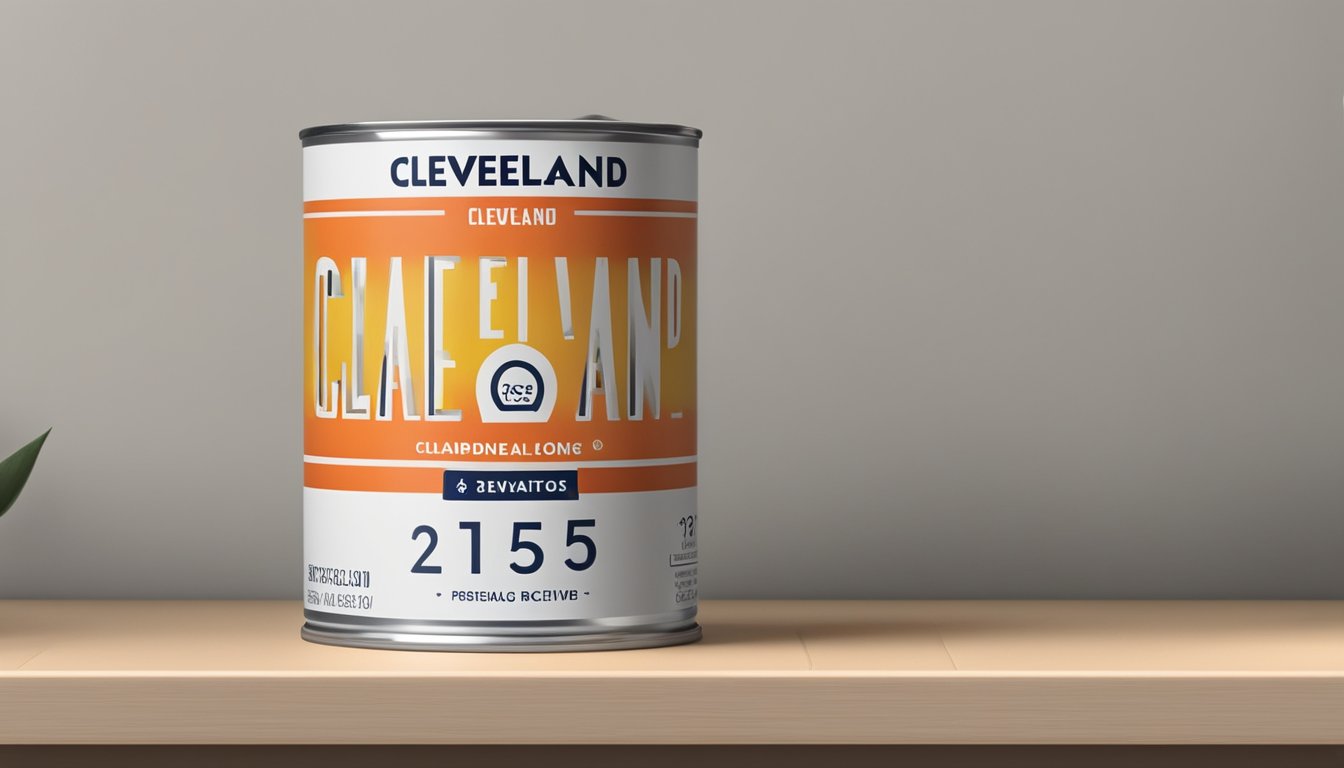If you’re in the market for a new putter, the Cleveland 2135 Satin 1.0 is definitely worth considering. This putter is designed to help you improve your game by providing uniform distance control no matter where you strike putts. It does this by lowering ball speeds from the center of the face and raising them for off-center hits. As a result, you’ll be able to make more accurate putts, which can help lower your scores.
The Cleveland 2135 Satin 1.0 putter is also aesthetically pleasing, with a sleek design that will look great in your bag. It features a bright blue standard size Cleveland grip with a ribbed back that enhances the connection your hands have with the putter. The putter also has a black-on-white raised sightline that helps with alignment, regardless of where your eyes are at address. This feature is particularly useful for golfers who struggle with alignment and need a little extra help getting their putts on target.
Key Takeaways
- The Cleveland 2135 Satin 1.0 putter is designed to provide uniform distance control no matter where you strike putts.
- The putter features a sleek design that looks great in your bag and has a black-on-white raised sightline that helps with alignment.
- Overall, the Cleveland 2135 Satin 1.0 putter is a great choice for golfers who want to improve their game and lower their scores.
Design and Aesthetics
The Cleveland TFI 2135 Satin 1.0 Putter is a modern putter that features a satin finish. The design of the putter is sleek and elegant, making it a great addition to any golfer’s bag. The putter is available in both blade and mallet styles, so you can choose the one that best fits your game.
The head shape of the Cleveland TFI 2135 Satin 1.0 Putter is a 1.0 blade, which is perfect for golfers who prefer a traditional blade putter. The blade putter has a classic look and feel, and it is designed to provide excellent feedback on every putt.
If you prefer a mallet putter, the Cleveland TFI 2135 Satin 1.0 Putter is also available in mallet styles. The mallet putter is designed to provide maximum forgiveness and stability, making it a great choice for golfers who struggle with consistency on the greens.
The satin finish of the Cleveland TFI 2135 Satin 1.0 Putter gives it a modern look that is sure to turn heads on the course. The finish is also designed to be durable and long-lasting, so you can enjoy your putter for years to come.
Overall, the design and aesthetics of the Cleveland TFI 2135 Satin 1.0 Putter are top-notch. Whether you prefer a blade or mallet putter, this putter is sure to impress with its sleek design and modern finish.
Performance and Feel
https://www.youtube.com/watch?v=dK6x0NR_0Xc&embed=true
When it comes to the Cleveland TFI 2135 Satin 1.0 putter, the performance and feel are truly outstanding. The putter is designed to offer golfers a soft feel and consistent roll, making it easier to control your speed and distance on the greens.
One of the key features of the TFI 2135 Satin 1.0 putter is the face milling, which helps to produce uniform ball speeds and consistent distance control, no matter where you strike the ball. This means that even mishits can still find their way to the hole with ease.
The soft feel of the putter is also a standout feature, thanks to the polymer insert behind the face. This insert helps to absorb impact energy and transfer it back to the ball, providing a smooth and stable feel on every putt.
In addition to the soft feel and consistent performance, the TFI 2135 Satin 1.0 putter also offers forgiveness and stability on mishits. This is due to the blade-style design and the weight distribution, which helps to keep the putter stable through impact.
Overall, the Cleveland TFI 2135 Satin 1.0 putter is an excellent choice for golfers who are looking for a putter that offers soft feel, consistent roll, and forgiveness on mishits. Whether you are a beginner or an experienced golfer, this putter is sure to help improve your putting game.
Advanced Technology
https://www.youtube.com/watch?v=Ms3ChVxJR0A&embed=true
The Cleveland TFI 2135 Satin 1.0 Putter is built with advanced technology that makes it stand out from the rest. The putter face features optimized milling that produces uniform distance control no matter where you strike the ball. The face technology is designed to lower ball speeds from the center of the face and raise them for off-center hits, which ensures a consistent roll and distance.
The putter’s raised sightline is another innovative feature that helps you align the ball with the center of the face for more accuracy. The sightline is elevated to the equator of the ball – 21.35 mm – which helps you consistently line the ball up with the sweet spot. This feature is especially useful for those who struggle with alignment and need more help visualizing the correct path to the hole.
The alignment line on the putter is also designed to help you aim accurately. The line is painted in a contrasting color to the putter head, which makes it easy to see and align. The lie of the putter is also optimized for better accuracy and feel. The putter’s lie angle is 70 degrees, which is the standard for most putters.
The putter face grooves are another innovative feature that helps you achieve a consistent roll. The grooves are designed to reduce vibration and produce a more solid feel at impact. The polymer backer in the grooves also helps to reduce vibration and produce a softer feel.
Finally, the putter’s satin finish is designed to reduce glare and provide a classic look. The finish has 50% more contrast than previous models, which makes it easier to see the alignment line and raised sightline. The combination of all these advanced technologies makes the Cleveland TFI 2135 Satin 1.0 Putter a great choice for golfers who want to improve their accuracy and distance control on the green.
Price and Value
When it comes to putters, you want to make sure you’re getting the best value for your money. The Cleveland TFi 2135 Satin 1.0 Putter is priced at around $119.00, which is a fair price for a putter of this quality. You can find this putter at most golf retailers or online stores like MyGolfSpy or Today’s Golfer.

« Best Adjustable Drivers for Golfers: Improve Your Game Today!
Best Lazrus Golf Clubs for a Better Game »
While the price may seem a bit steep for some, the value you get from the Cleveland TFi 2135 Satin 1.0 Putter is worth it. The putter’s 2135 technology provides consistent distance control no matter where you hit the ball on the face. This means you can putt with confidence and know that you’re getting the same distance every time.
Additionally, the putter’s satin finish gives it a sleek and modern look that will stand out on the green. The blue Cleveland grip also adds a pop of color and provides a comfortable grip for your hands.
It’s important to note that some retailers may offer affiliate commission on sales of this putter, so be sure to check for any deals or promotions before making your purchase. Overall, the Cleveland TFi 2135 Satin 1.0 Putter is a great investment for any golfer looking to improve their putting game.
First Impressions and Reviews
https://www.youtube.com/watch?v=tI4y1DZ-3Fg&embed=true
When you first take a look at the Cleveland TFI 2135 Satin 1.0 Putter, you’ll immediately notice the sleek and stylish design. The satin finish gives the putter a modern look, while the traditional blade shape is timeless. The raised alignment aid also helps with aiming, making it easier to line up your putts.

According to Golf Digest editors, the Cleveland TFI 2135 Satin 1.0 Putter received high ratings in the categories of performance, innovation, and feel. These categories make up a significant percentage of the total score, so it’s clear that this putter is a top performer.
Players have also commented on the feel of the putter, noting that it has a soft and responsive touch. The TFI copper/polymer insert system provides a great feel and sound upon impact. This insert system also helps to improve roll, making your putts more consistent.
Professional golfer Keegan Bradley has also used the Cleveland TFI 2135 Satin 1.0 Putter on the course. He has praised the putter for its performance and consistency, stating that it has helped him improve his putting game.
Overall, the Cleveland TFI 2135 Satin 1.0 Putter is a top-performing putter that is well worth considering if you’re looking to improve your putting game. With its sleek design, innovative technology, and excellent feel, it’s no wonder that this putter has received high ratings and positive player comments.
Frequently Asked Questions

What are the key features of the Cleveland TFI 2135 Satin 1.0 putter?
The Cleveland TFI 2135 Satin 1.0 putter is designed with a milled copper-infused face cap over a copolymer insert, which helps to deliver a soft feel and consistent speed across the face. The putter also features a raised sightline that is 21.35mm off the ground, which is the same height as the center of a golf ball. This helps you to align the putter more accurately and consistently.
What makes the Cleveland TFI 2135 putter stand out from other putters?
The Cleveland TFI 2135 putter stands out from other putters due to its unique raised sightline. This feature helps golfers to align the putter more accurately and consistently, resulting in more made putts. Additionally, the milled copper-infused face cap over a copolymer insert helps to deliver a soft feel and consistent speed across the face.
Is the Cleveland TFI 2135 Satin Elevado putter suitable for beginners?
The Cleveland TFI 2135 Satin Elevado putter is suitable for golfers of all skill levels, including beginners. The raised sightline helps to improve alignment and consistency, which is especially helpful for golfers who are new to the game.
How does the Cleveland TFI 2135 Rho putter compare to the Cero putter?
The Cleveland TFI 2135 Rho putter and Cero putter are both designed with the same raised sightline and milled copper-infused face cap over a copolymer insert. The main difference between the two putters is their shape. The Rho putter has a more traditional blade shape, while the Cero putter has a more modern mallet shape. Ultimately, the choice between the two putters comes down to personal preference.
Where can I find the best deals on Cleveland TFI 2135 putters?
You can find the best deals on Cleveland TFI 2135 putters by shopping around at various golf retailers and online stores. Be sure to compare prices and look for any promotions or discounts that may be available.
Are there any reviews or feedback from professional golfers on the Cleveland TFI 2135 putters?
Yes, there are many reviews and feedback from professional golfers on the Cleveland TFI 2135 putters. Many professional golfers have praised the putters for their unique raised sightline, which has helped them to improve their alignment and consistency on the greens. Additionally, many golfers have noted the soft feel and consistent speed across the face, which has helped them to make more putts.










